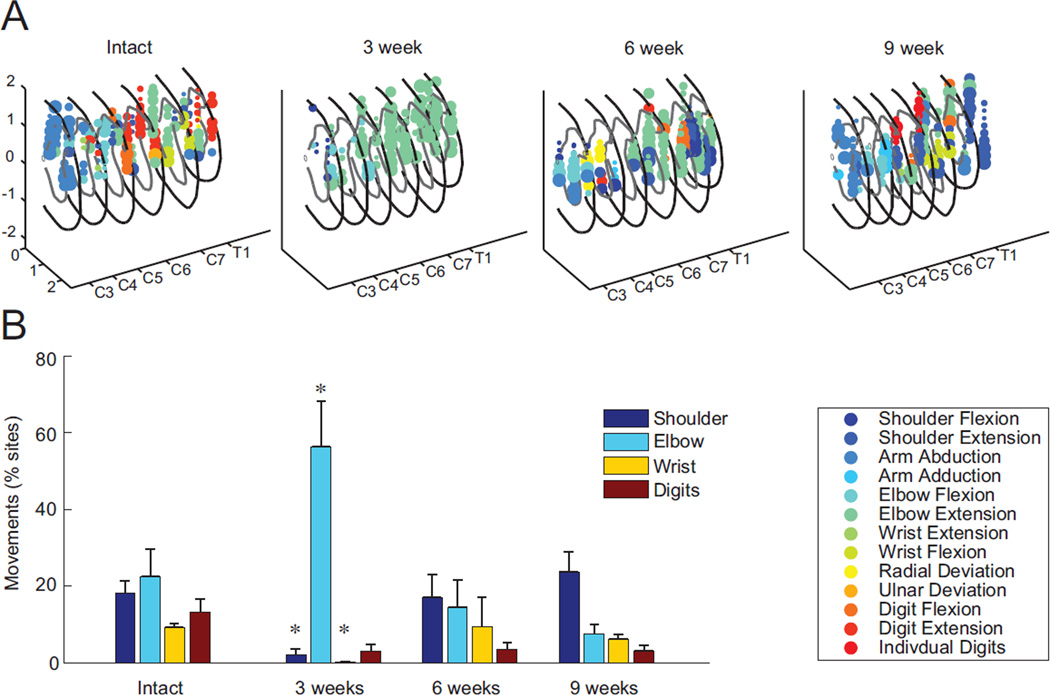Figure 4.
Proportion of observed movements before and after cervical spinal cord injury. A: Reconstruction of forelimb movements evoked by cervical intraspinal microstimulation (ISMS) in example animals prior to spinal injury and at three, six and nine weeks after mid-cervical contusion injury (format identical to Figure 2A). While a variety of movements could be evoked prior to injury, as indicated by the range of colored symbols, extension of the elbow was dominant in animals three weeks after spinal injury. The variety of movements begins to return by six and nine weeks. B: For all animals in the study, the number of movements evoked via spinal stimulation about each forelimb joint as a percentage of total sites tested across each condition (Mean ± SEM; N = 5 spinally-intact animals, N = 3 animals per group at each post-injury time point, * denotes p < 0.05 compared to the spinally-intact animals).

